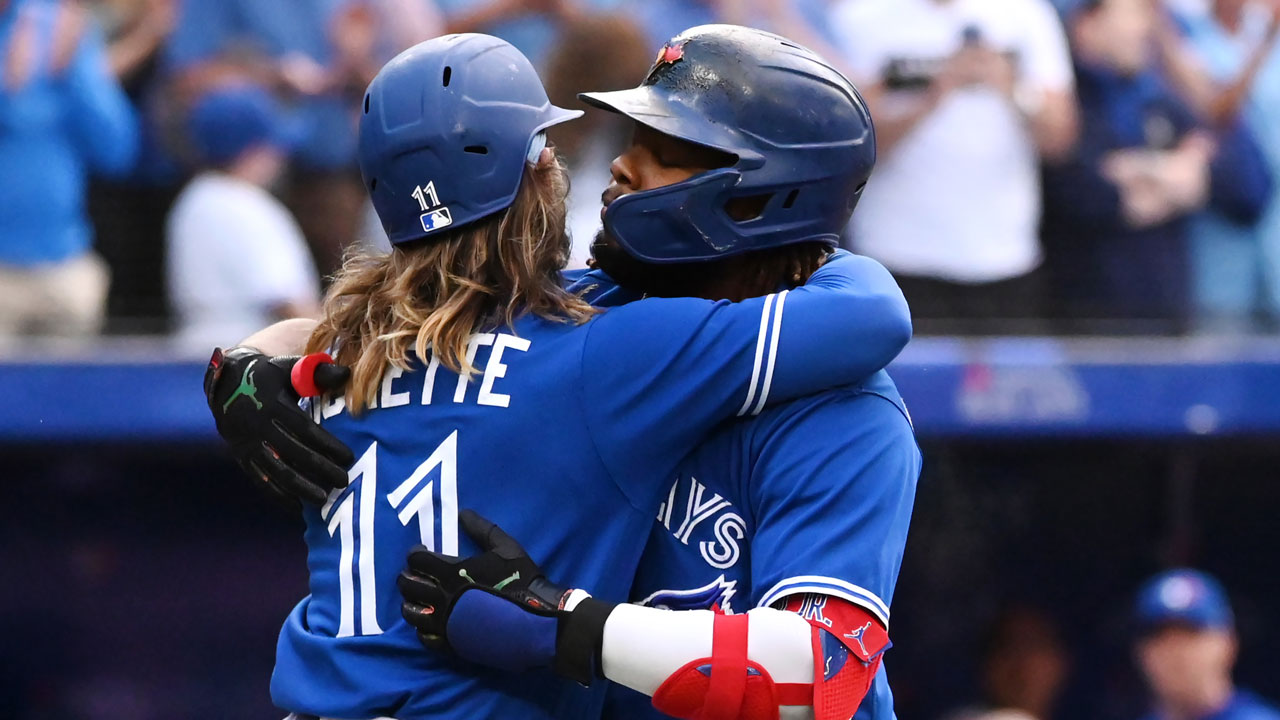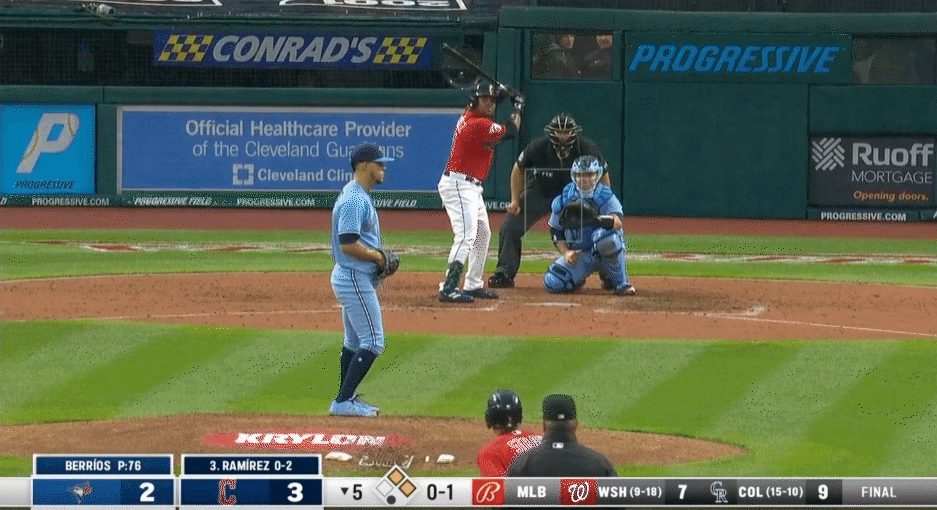[ad_1]
Jose Berrios entered 2022 as a paragon of consistency, but this year he’s been the Toronto Blue Jays‘ most inconsistent starter.
While it’s easy to underestimate the amount of baked-in volatility of even elite players’ performance, the right-hander’s season has been a rollercoaster by any standard.
Often that description is a mere cliche. In Berrios’s case, it’s about as good a metaphor as you’ll find — as shown by his five-game rolling ERA (with his 2021 season providing a solid reference point):
Most of the extreme spikes are in the upwards direction, which figures given that his season-long ERA sits at 5.07. He’s had a few strong stretches too, though.
The right-hander’s season has included moments of brilliance to go along with the letdowns. For instance, he set his career high in strikeouts on June 4, then matched it on July 12. He was also a top-10 starter in the majors by both innings pitched (36) and strikeouts (42) in July.
Over and over again, he’s seemed to turn the corner with a new adjustment, ranging from release point changes to pitch mix alterations, only to come crashing down to earth. In recent days, Berrios has begun yet another experiment.
In his two September starts, the 28-year-old has thrown his changeup at a higher rate than ever before. In each of those outings he’s used it at least 29 percent of the time — an unprecedented number for him that leads to a month-by-month usage chart that looks like this:
The results have been strong (12.1 innings of 2.19 ERA ball), but the sample is far too small to know how this will pan out. Even so, the theory behind it is intriguing.
First off, it’s worth noting that the pitch isn’t — in and of itself — a dominant offering. The Berrios changeup has a +3 run value in his career, and opponents have hit .241 and slugged .410 off of it. Its movement is bog standard both vertically (2% above average) and horizontally (1% above average).
There is a reason it took this long to try featuring the pitch. Neither the changeup’s movement, nor the success hitters have had against it, suggest it should headline the 28-year-old’s arsenal.
Despite its shortcoming in a vacuum, Berrios’s changeup could be extremely valuable in the context of the Opening Day starter’s struggles.
Perhaps his biggest issue is the way his four-seam fastball has been mashed. Opponents are hitting .357 and slugging .649 off it, and Statcast’s run value has it pegged as the sixth-worst pitch in baseball.
It’s possible that upping his changeup usage could make that fastball a better pitch in a way that his other offerings don’t. His breaking ball and sinker both have a tonne of horizontal movement that makes them tunnel well with each other…
… but neither is easily confused for the vertically-oriented four-seamer on the way in. The ideal pitch to pair with that pitch is a big 12-6 curve, but the changeup can do the job:
At this point, the sample of Berrios going heavy on the changeup is too small to know whether it will have the desired effect on his heater. Opponents are 3-for-7 on that pitch in the last two games, but it will be interesting to see if that changes if he continues with this approach.
Between Mark Buehrle, Marco Estrada and Hyun-Jin Ryu, the Blue Jays have had a number of starters see their fastballs perform far better due to heavy changeup usage. Berrios doesn’t have a changeup to match that trio, but those pitchers are salient examples of how that offspeed pitch can affect the performance of a fastball.
Another reason Berrios may be tinkering with a more changeup-focused approach is the difficulty he’s had with left-handed hitters. Over the last two seasons, lefties have hit .273/.330/.498 against the veteran.
During the same time span, left-handed batters have hit .232 and slugged .333 against his changeup, and its whiff rate against them has hovered between 22 and 30 percent in every year of career. It may not be as aesthetically pleasing as his breaking ball, but he snaps off a pretty one that falls just out of reach from time to time.
Over his last two starts he’s used this pitch to left-handed hitters 41.6 percent of the time, and it’s worked as they’ve hit .188 off of it without an extra-base knock. It’s a small sample, but it’s clearly a new plan of attack considering he’d never used it against lefties at a rate higher than 27 percent in any other month of his career.
Right now what we’re seeing from Berrios is one tweak in a line of many. It’s far too soon to know whether it’ll pan out.
What we can say with confidence is that his newest adjustment takes aim at addressing some of his biggest weaknesses in a way that makes sense.
[ad_2]




